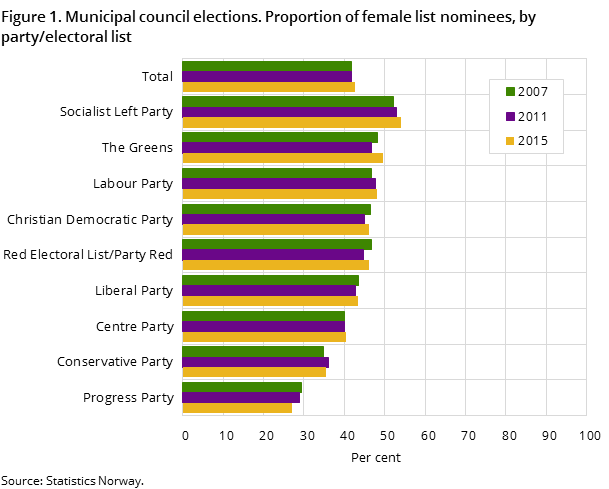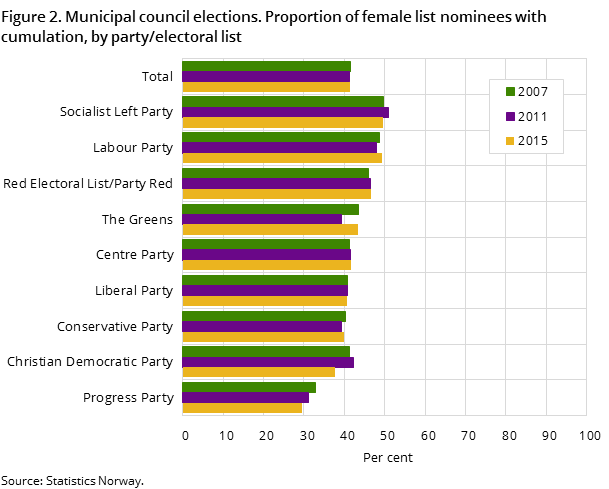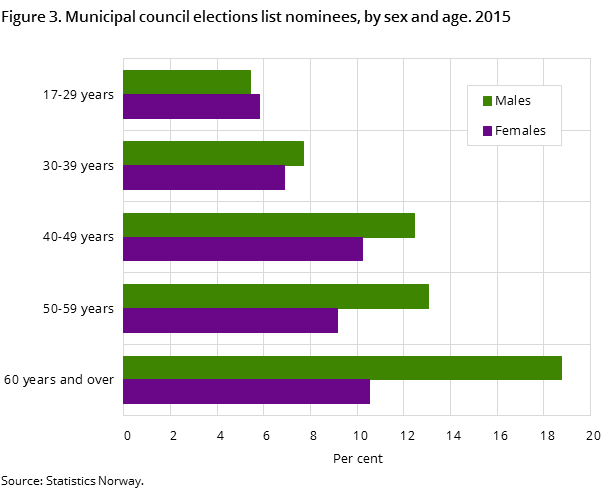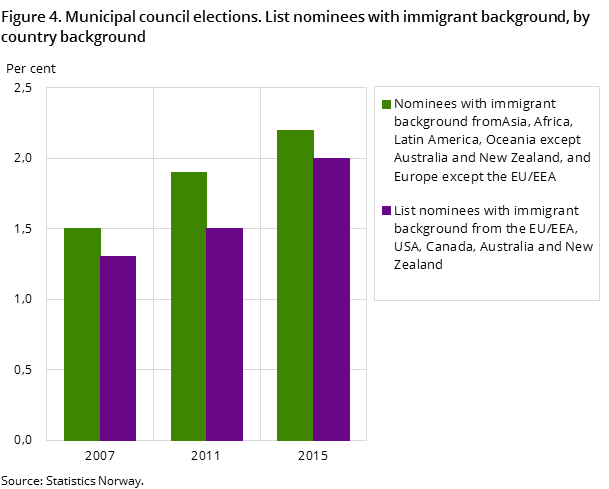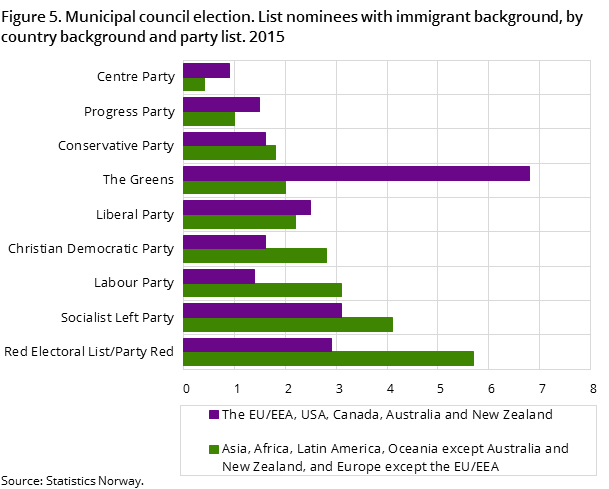60 000 list nominees
Published:
For this year’s county and municipal elections, 59 983 nominees are candidates. The proportion of females is 43 per cent. The share with an immigrant background is 4.2 per cent; an increase of 0.7 percentage points compared to the local elections in 2011.
In total, 58 093 nominees are candidates in this municipal election. This is 1 412 fewer than the last municipal election in 2011. The Labour Party has the most list nominee candidates followed by the Centre Party and the Conservatives. In the county council election, 7 030 nominees are candidates. Many of the nominees are candidates in both the municipal election and county council election. The Liberal Party has the most list nominee candidates in the county council election followed by the Labour Party and the Centre Party.
43 per cent of the nominees are women
The proportion of women in the municipal election is 43 per cent. This is an increase of about 1 percentage point compared to local elections in 2011. As in previous elections, there are significant differences between the parties/lists. The Socialist Left Party has the highest proportion of women among their list nominees, with 54 per cent. The Greens have about 50 per cent women among their list nominees. The Progressive Party has the lowest at 27 per cent.
Most nominees over 50 years
Fifty-two per cent of nominees in the municipal election are over 50 years of age. Nineteen per cent of all candidates are men over 60. In comparison, women in the same age group represent 11 per cent. Six per cent of all candidates are women under 30 years of age, while men in the same age group are 5 per cent. The Greens have the highest proportion of nominees under 30 years old, while the Christian Democratic Party has the lowest percentage. The Christian Democratic Party and the Socialist Left Party have the highest percentage of list candidates over 60 years, while the Greens have the lowest percentage.
2 444 list nominees have an immigrant background
A total of 2 444 list nominees have an immigrant background. The share with an immigrant background is 4.2 per cent; an increase of 0.7 percentage points compared to the local elections in 2011. Red has the highest proportion of list nominees with an immigrant background, with 8.6 per cent. The lowest percentage is with the Centre Party, at 1.3 per cent. Of list nominees with an immigrant background, 54 per cent have a background from Africa, Asia etc., while 46 per cent have a background from the EU/EEA etc.
In Oslo, the proportion of list nominees with an immigrant background is higher than the rest of the country, with 18 per cent. Of these, 76 per cent have a background from Africa, Asia etc., while 24 per cent are from the EU/EEA etc. Red has the highest and the Progressive Party has the lowest proportion of list nominees in Oslo.
Large proportion of nominees with a high level of education
About 45 per cent of list candidates at municipal elections have a higher education. In comparison, 31 per cent of the population have a higher education. There are relatively more female than male listed candidates with a higher education; 53 and 39 per cent respectively. However, men have a greater percentage of listed candidates with a long, higher education (more than 4 years) than women. The Socialist Left Party and the Greens have the largest proportion of nominees with a higher education; 68 and 63 per cent respectively. The Progressive Party has the lowest with 16 per cent.
Contact
-
Øyvin Kleven
-
Statistics Norway's Information Centre

